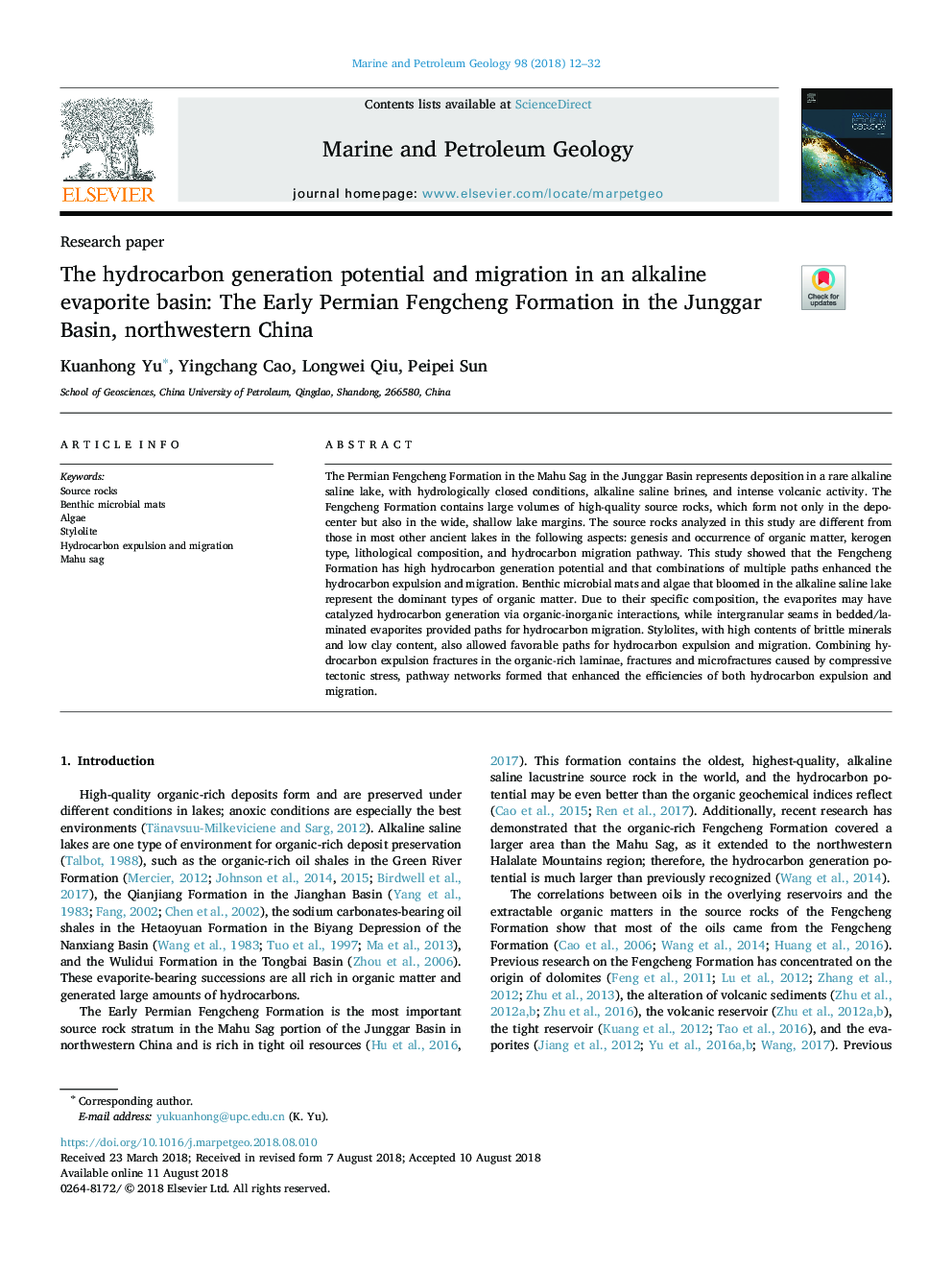| Article ID | Journal | Published Year | Pages | File Type |
|---|---|---|---|---|
| 8908930 | Marine and Petroleum Geology | 2018 | 21 Pages |
Abstract
The Permian Fengcheng Formation in the Mahu Sag in the Junggar Basin represents deposition in a rare alkaline saline lake, with hydrologically closed conditions, alkaline saline brines, and intense volcanic activity. The Fengcheng Formation contains large volumes of high-quality source rocks, which form not only in the depocenter but also in the wide, shallow lake margins. The source rocks analyzed in this study are different from those in most other ancient lakes in the following aspects: genesis and occurrence of organic matter, kerogen type, lithological composition, and hydrocarbon migration pathway. This study showed that the Fengcheng Formation has high hydrocarbon generation potential and that combinations of multiple paths enhanced the hydrocarbon expulsion and migration. Benthic microbial mats and algae that bloomed in the alkaline saline lake represent the dominant types of organic matter. Due to their specific composition, the evaporites may have catalyzed hydrocarbon generation via organic-inorganic interactions, while intergranular seams in bedded/laminated evaporites provided paths for hydrocarbon migration. Stylolites, with high contents of brittle minerals and low clay content, also allowed favorable paths for hydrocarbon expulsion and migration. Combining hydrocarbon expulsion fractures in the organic-rich laminae, fractures and microfractures caused by compressive tectonic stress, pathway networks formed that enhanced the efficiencies of both hydrocarbon expulsion and migration.
Keywords
Related Topics
Physical Sciences and Engineering
Earth and Planetary Sciences
Economic Geology
Authors
Kuanhong Yu, Yingchang Cao, Longwei Qiu, Peipei Sun,
